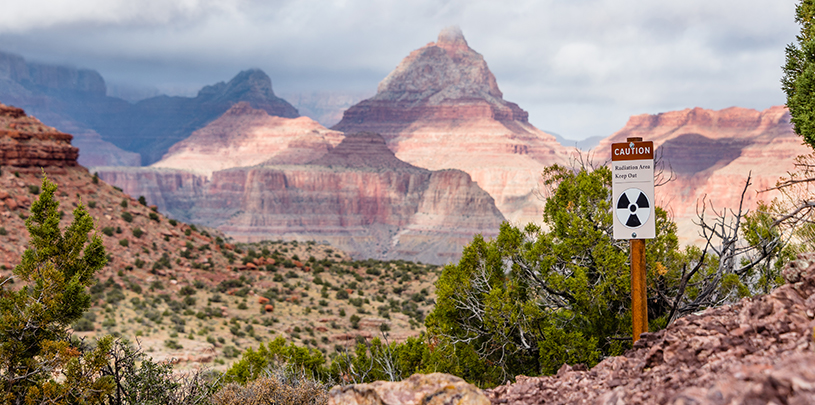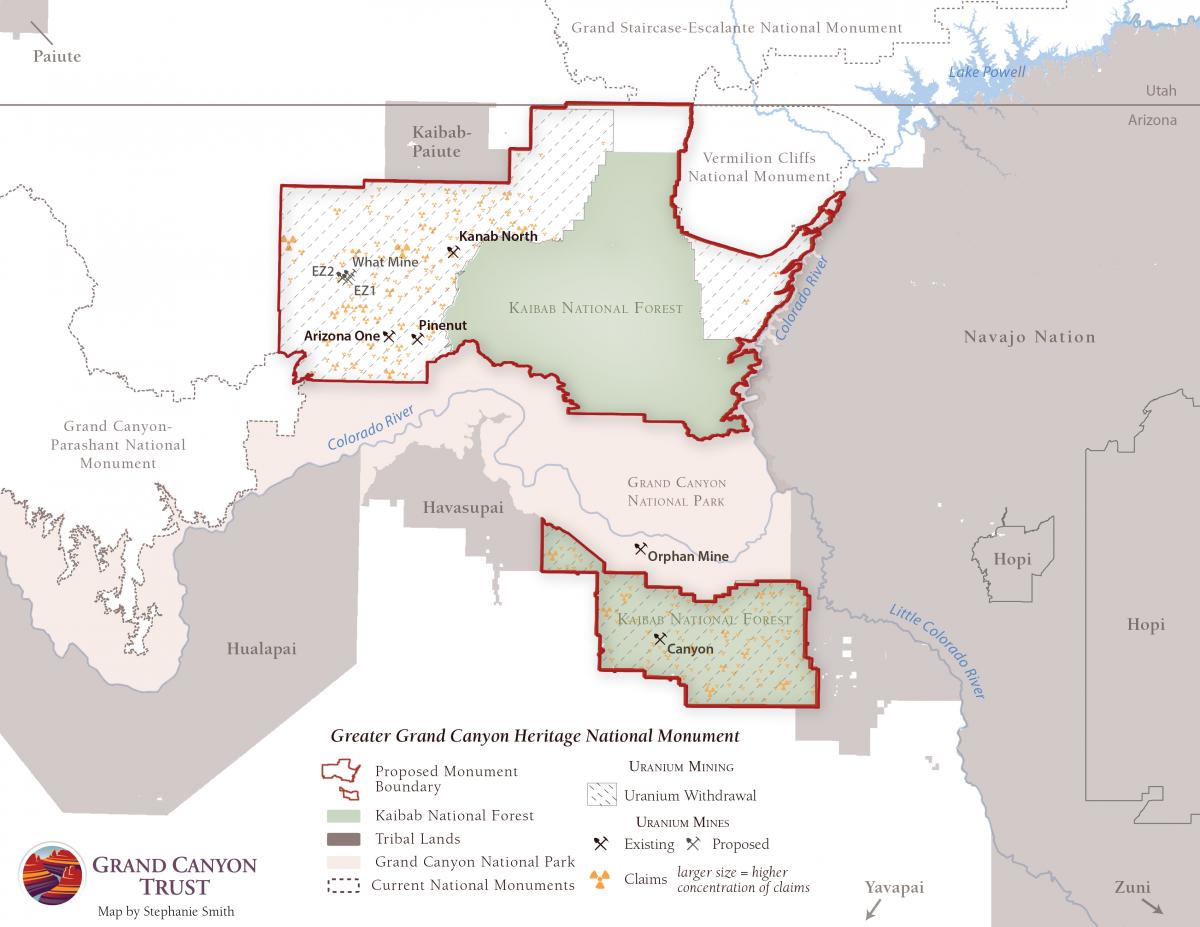
 by Roger Clark, Grand Canyon Director
by Roger Clark, Grand Canyon Director
A spike in radiation levels in soil around an active uranium mine just a few miles north of Grand Canyon National Park has led the Arizona Department of Environmental Quality (ADEQ) to suspend air pollution permit renewal applications for three uranium mines. All three mines are located on public lands near the park popular with campers and hunters.

On Dec. 18, Energy Fuels Resources, the company that owns the Canyon and Pinenut uranium mines, and the EZ uranium claim, reported soil samples taken just outside the Pinenut Mine’s perimeter fence showed uranium levels four times higher than background levels. Energy Fuels is required to take soil samples around the mines and report the results to the ADEQ as part of its radiation survey plan.
In response, the ADEQ decided to suspend work on all three air quality permit renewals and ordered “enhanced dust controls” and additional sampling.
The ADEQ told reporters it will oversee the sampling and independently analyze the samples Energy Fuels collects, as well as conduct an onsite inspection to verify that the additional and enhanced dust control measures are being implemented.
Air pollution permits for Arizona uranium mines come up for renewal only every five years. The permits for these three Grand Canyon region mines were last renewed in 2010. The ADEQ plans to hold public hearings in Flagstaff and Tuba City and open a new public comment period for the air pollution permit renewals for all three mines. Dates have not yet been announced.
When the air quality permit renewals were initially opened to public comment in December 2015, no public hearings were scheduled. The Grand Canyon Trust, Sierra Club, and Center for Biological Diversity submitted lengthy comments detailing environmental concerns and requested public hearings be held in Flagstaff and Tuba City. Both communities are located along the uranium truck haul route for Canyon Mine, which is located near the town of Tusayan, near the South Rim entrance where five million visitors entered the park in 2015.

Radioactive dust from the uranium mine sites and along uranium ore haul routes is a well-known contaminant that mining companies are required to monitor. Nonetheless, the ADEQ allows ore to be hauled in tarpaulin-covered dump trucks, instead of requiring air-tight and water-proof containers that would prevent leakage along hundreds of miles of roadways through local communities.
Moreover, agencies allow mined ore to be stockpiled at mine sites for long periods of time, while wind blows dust across the surrounding landscape. For example, Energy Fuels' application for the as-yet-to-be-developed EZ Mine would allow it to stockpile up to 169,400 tons of ore on the site, more than ten times the 13,100 tons of on-site uranium ore allowed at Canyon Mine. In 2010, the U.S. Geological Survey documented widespread soil contamination caused by prolonged stockpiling of uranium ore at Kanab North Mine.
The ADEQ claims that soil contamination levels at Pinenut Mine “pose no immediate risk.” The Bureau of Land Management made similar assertions when the Trust and allies petitioned the agency to suspend operations at Pinenut after more than 2,000 gallons of highly contaminated groundwater were discovered in its mine shaft prior to reopening in 2009. The federal agency rejected our petition to review the mine’s operating permit.
State and federal agencies consistently reject requests to review pollution permits for Grand Canyon uranium mines. And they consistently approve permit renewals with boilerplate responses to public concerns.
On January 1, 2016, the Arizona Republic reported that Energy Fuels continues to claim that Pinenut’s pollution is “extremely low” and is not a threat to the environment. However, the evidence continues to accumulate regarding the adverse effect of uranium mining on public lands surrounding the Grand Canyon.
A 20-year ban on new Grand Canyon uranium claims ordered by the Secretary of the Interior in 2012 would be made permanent under a tribal proposal to establish the Greater Grand Canyon Heritage National Monument.
Comments (4)
Leave A Comment